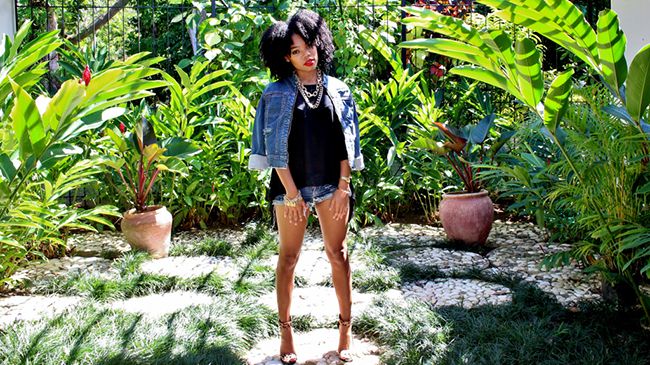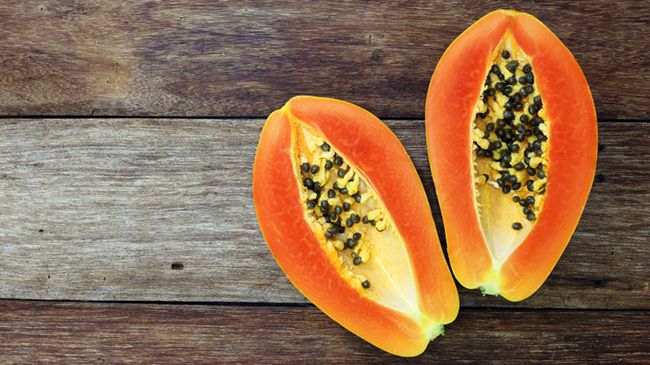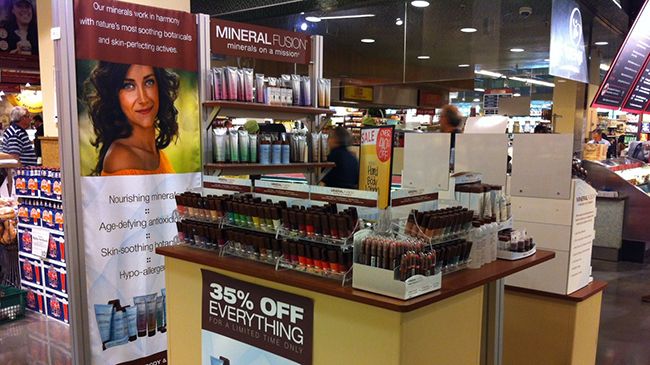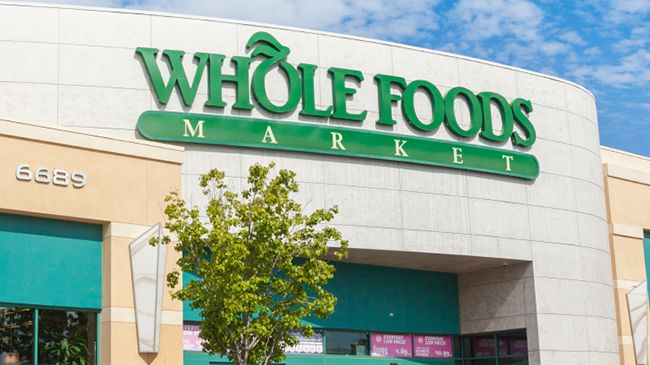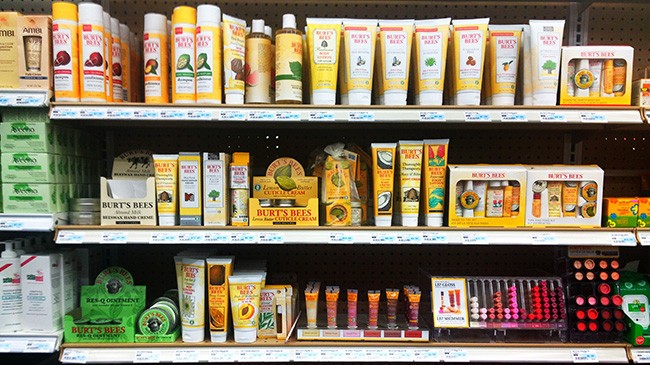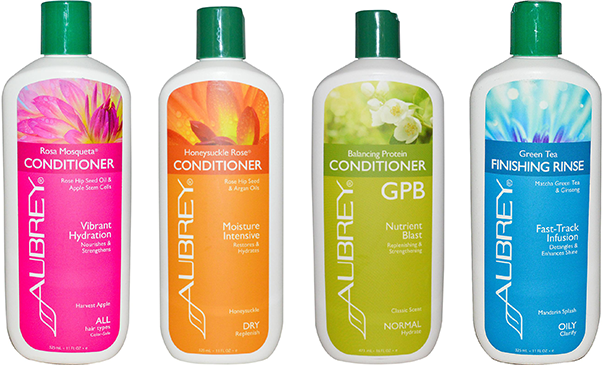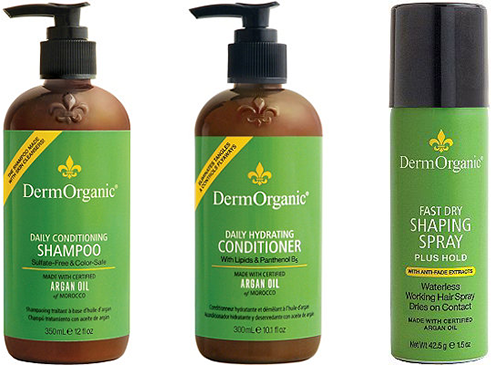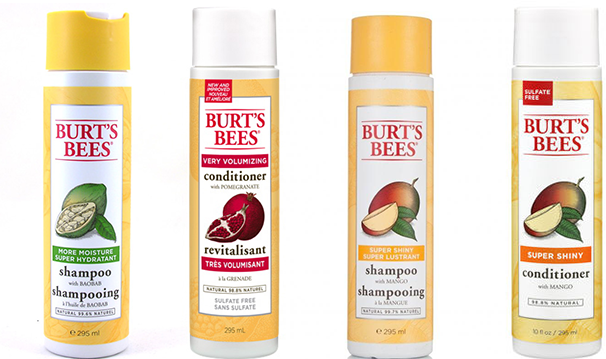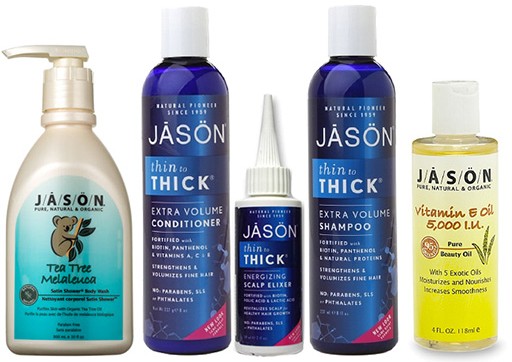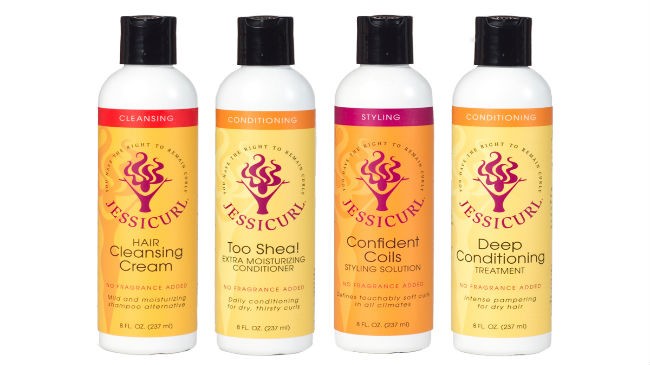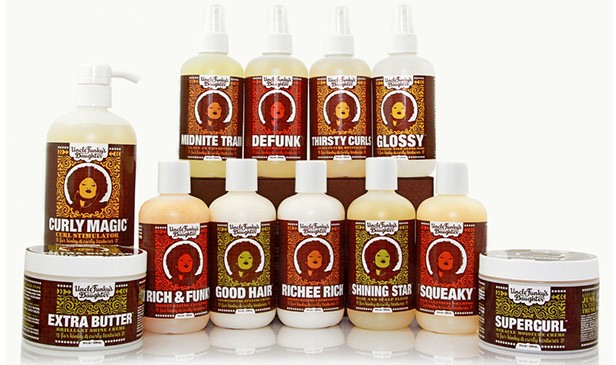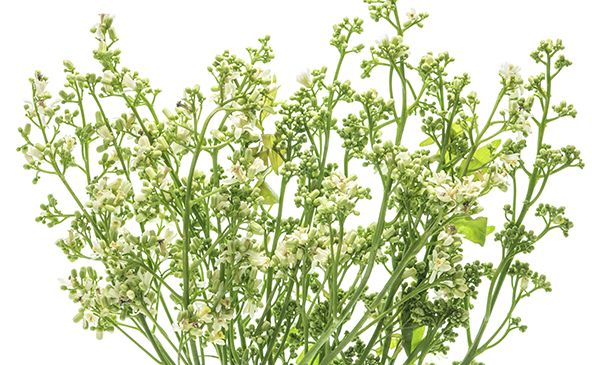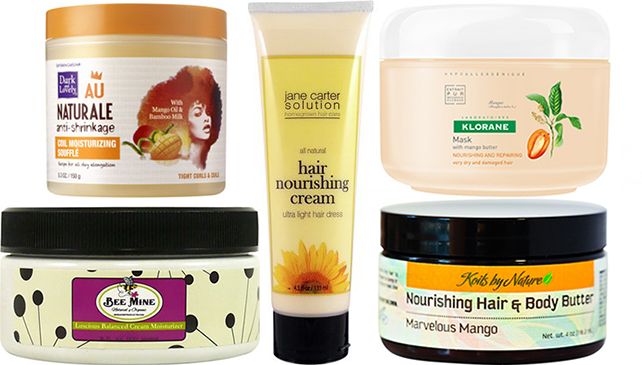Search Results: Sabrina Perkins

The power of natural oils
Do not discount the power of natural oils. Whether you are discussing essential or carrier, natural oils bring numerous benefits to our bodies and strands. Essential oils are used extensively in aromatherapy while some are even used by traditional medicinal systems. Carrier oils or base oils are often filled with essential fatty acids that aid in cleaning, skincare, hair care, massage, and even cooking. They are quite often used to dilute the potent essential oils, as they are extremely concentrated. Both carrier and essential oils are revered for their cleansing, aid in moisturizing, sealing and healing either together or separately.
Now, in general oils alone are not moisturizers but there are a few oils that will penetrate the hair shaft and soften the hair from within. So, some oils moisturize while others merely seal. That means some soak in while others just coat the hair. Which is which and why? I had to consult a professional to get more information.
Sister Scientist breaks it down
It takes a real chemist to explain what is going on with oils and their penetration levels, so Sister Scientist was gracious enough to share her knowledge on the subject.
“The level of penetration is determined by the size of the oil molecule and polarity. Coconut oil, being the most penetrable of natural oils, is very high in triglycerides containing short chain fatty acids, making the molecules small enough to penetrate the cuticle layer. It is also more polar (positively charged”> than most oils, which makes it more attracted to the negatively charged proteins in hair.
Moisturize
Oils that are more likely to penetrate deeper into the hair shaft include:
- coconut oil
- sunflower oil
- palm kernel oil
Seal (with a little moisture”>
Oils that may also penetrate slightly beyond the outer cuticle layer, but are better to be used as oils to seal, coat, and lubricate the hair to prevent moisture loss and increase softness include:
- olive oil
- avocado oil
- argan oil
Seal
Oils that contain very bulky lipid chains make the molecules bigger, and highly unlikely to penetrate, but are great to enhance shine and lubrication for ease of combing. They include:
- jojoba oil
- rice bran oil
A 2005 study confirms that heat can help oils that are already likely to penetrate the hair to penetrate faster.”
Best Way to Use Oils
- Moisturizing/penetrating oils: coconut oil, sunflower oil, and palm kernel oil
- Partially penetrating and sealing oils: avocado oil, olive oil, and argan oil
- Sealing oils: jojoba oil and rice bran oil
There are differences in penetration levels with popular oils and knowing their levels can only aid in giving your tresses what they need, whether from within the hair shaft or merely coating it. Use heat when you want your penetrating oils to permeate the hair shaft faster. When using oils for a pre-shampoo or merely to seal your ends, several natural oils are useful in protecting your hair on superficial and cellular levels.
Follow Natasha Leeds here:
Stylish Lee and Instagram
Which are your favorite oils for moisturizing and sealing?
References:
Journal of Cosmetic Science, 56, 283-295 (September/October 2005″>
Investigation of penetration abilities of various oils into human hair fibers. K. KEIS, D. PERSAUD, Y. K. KAMATH, and A. S. RELE.
Amla powder
An Indian gooseberry, amla is the fruit with greenish yellow berries and a fibrous inner texture that grows on the myrobalan-tre, which is native to India and Burma. Phyllanthus emblica is its botanical name and it is harvested by hand in autumn. This fruit with a sour, bitter, and astringent taste has a high vitamin C content, which is excellent for boosting the immune system and the powder is often added to the roots of hair to add strength and shine.
Bhringaraj powder
Also known as Eclipta alba, this herb is an annual, creeping and moisture-loving herb. Bhringarj is the main herb for hair care in Ayurveda. It stops premature graying by retaining the hair’s natural color. Its anti-inflammatory properties function as a scalp exfoliator to rid infections and reduce dandruff. It is most prized for combatting hair loss induced by medical condition and stress.
Brahmi powder
This creeping perennial is native to many parts of the world and most frequently found in tropical regions of the Asian continent. Bacopa monnieri is its botanical name and it is well-known as a hair thickener and possessing rejuvenating properties. Best used in combinations with other popular Ayurvedic powders like amla, bhringarj, shikakai, and neem to aid in strengthening hair’s roots.
Henna
This natural plant used for staining the skin (for decorations”> and coloring hair is made from the powdered leaves of a desert shrub plant lawsonia. The leaves of the henna plant contain lawsone and this orange/red dye is released as the leaves are crushed. This shrub grows in the tropical and subtropical regions of the world like Africa, Northern Australia, and Southern Asia and the purest quality henna is grown and harvested in Northwestern India. Henna does more for hair than coloring, as it stops hair breakage, seals in moisture, and repairs the hair’s cuticle and has some conditioning properties.
Hibiscus petal powder
Also known as Jaswand or Jaswandi, this plant grows mostly in tropical regions of the world. Its botanical name is Hibiscus sabdariffa and can be found as the main ingredient in many refreshing teas made around the world. Hibiscus petal powder enhances the red tones in hair when used with henna to achieve cherry color in hair. Great as a gentle cleanser (perfect for a scalp scrub”> and a conditioning herb that helps decrease hair shedding by strengthening and condition the roots. Gain volume and shine with this hair loving herb.
Marshmallow root powder
From the Malvaceae plant family, this perennial herb is native to damp areas of northern Europe and Western Asia. Its botanical name is Althaea officinalis and has been most commonly used to ease sore throats and dry coughs. It is a valuable ingredient in hair products, as it will aid in treating eczema, psoriasis, and a dry scalp. It is also beloved in the curly hair community as the gel-like substance is superior for detangling.
Neem leaf powder
All parts of the neem tree are used in traditional medicine. Azadirachta indica is its botanical name and the tree is native to India. This natural herb is powerfully effective on fighting diseases with its antibacterial, antifungal, and antiviral properties. It helps to treat scalp ailments, promote healthy hair growth, and is believed to aid in relieving hair loss that occurs from excess sebum that clogs the pores of the scalp or by psoriasis and eczema. Neem leaf powder can treat those conditions and cleanse the scalp for healthy hair growth.
Shikakai powder
Translating to “hair-fruit” or “fruit for hair”, this shrub-like tree grows in central India. It is high in vitamins A, C, D, E, and K along with antioxidants. It has been used for centuries as a cleanser for body and hair because of its cleansing properties. A reliever of dandruff, it also has detangling properties and will promote hair strengthening and conditioning.
Most of these powders can be made into a paste with distilled water and used either alone or with other powders and oils for outstanding hair masks, cleansers, conditioners, and gels. All of these natural powders will bring wonderful benefits to your hair so which is your favorite or which one are you ready to try?
Hair damage is nothing to be ashamed of nor should you feel like a failure if you are dealing with it right now. It happens to the best of us, and if you are around long enough you will likely experience some form of damage at some point in your hair journey. No worries though, if you know how to spot the signs of damage you can stop it before it worsens and work to prevent it from happening again. Here are the top four types of hair damage and what you can do about them.
1. Your hair won’t curl anymore
If you use heat styling tools and you find that your hair refuses to revert back to its curly, coily or wavy state even after you wash and condition your tresses, it may be heat damage. Other telltale signs are that the hair is brittle or has lost its elasticity. Heat damage can occur after several heat applications or just from one. These damaged pieces can occur just in one spot or several sections in your head.
The health of your hair has been compromised either by using heat appliances too often, or using excessively high temperatures. Healthy hair burns at just over 450F, this temperature is much lower for hair that has already been damaged. Curling irons, flat irons and blow dryers can be misused when their heat settings are too high, and even with the use of heat protectant you can still burn your hair with just one application.
The solution: Cut it off or temporarily treat it
First and foremost, stop applying heat to your hair. There are numerous ways to dry your tresses and even wear them straight without applying heat, so opt for heatless styles at least until your hair is healthy again.
Unfortunately, heat damage cannot be repaired. It can be prevented or even treated but it cannot be repaired. Cutting the heat-damaged strands off is an immediate solution to the problem, but it is not the only way to handle it. One reason to consider alternative solutions is if you only have damage to one or two sections of hair, cutting it may create unevenness or cause you to resort to a much shorter style than you wanted.
Structural damage, a lifted or damaged cuticle or broken keratin chains in the cortex of the hair can be improved with the proper application of processed protein, under the right conditions. You can also treat the damaged strands with products specifically created for such events. ApHogee Shampoo for Damaged Hair restores sheen and pliability to your damaged strands but for the big guns you want the try the Two-Step Protein Treatment. This unique treatment which is formulated with magnesium and modified proteins aid in reducing hair’s damage.
As a precaution because you do not want the damage to travel up the hair shaft, get regular trims (maybe even more often”> while treating your hair. This way your hair is growing while you are cutting it.
2. Your hair feels mushy when wet and hard when dry
These are signs that your hair is over-processed. Most commonly, chemical processing like color and straightening treatments, as well as mechanical damage from styling tools, are responsible for structural damage to hair. Chemicals are often designed to lift and penetrate the protective layer of the hair in order to change the shape or color. This begins to break down the integrity of the strands. Over-processed hair will have similar symptoms to heat-damaged hair, like brittleness and dryness, but unlike heat-damaged hair it may not be straight. Over-processed hair can be limp, mushy when wet and brittle after drying, full of split ends, and you may find that your hair does not hold color well. Many complain of their hair feeling hard when there was no hard feeling to their strands before. If your hair is feeling “hard” and you have been using chemical treatments, it may be time to acknowledge the damage.
The solution: Condition, condition, condition! And treat
Again, the first step is to stop the chemical treatments that have over-processed your tresses. Opt for natural coloring methods like using henna, find less harmful methods of straightening your hair, or wear your hair curly until it is healthy. Cleanse your hair with cleansers that will add moisture instead of stripping it. ApHogee Deep Moisture Shampoo is a great choice for regaining your hair’s elasticity and moisture levels.
Then condition, condition, condition! Your hair needs to be pampered. Hot oil treatments, deep conditioners and moisturizing leave-in conditioners will become mandatory during each wash cycle. The ApHogee Two-Step Protein Treatment can help rebuild the damaged strands, and incorporating Aphogee Balancing Moisturizer afterward will combat your hair’s dryness by sealing in the much-needed moisture.
3. Your edges are thinning
Your edges are thinning when find your scalp becoming increasingly exposed and the hair framing your face beginning to thin. This can be from tight hairstyles pulling at your delicate edges, an unhealthy diet, stress or over-manipulation of styling tools. The hairs around the nape and edges are delicate and when thinning it can be a sign of more damage to come so when you notice them do not ignore.
The solution: Stop high-tension hairstyles and regrow edges
If you wear braided styles, weaves or wigs it may be time to stop using them until your edges grow back. Either they were too tight or used excessively. Hair massages are excellent ways to increase blood flow to the scalp and hair follicles while conditioning the scalp and enhancing the strength of the roots. ApHogee Essential Oils for Hair can be used as a hot-oil treatment or a scalp massaging oil with its herbal, vitamin, and sweet almond oils.
4. Brittle, straw-like strands
Sometimes you can have too much of a good thing. If you are using protein frequently (once a week or more”> it is possible that your hair could become brittle, dry and break off. Even if you are not using an protein treatments that does not mean you are not using protein. Many of our regular hair products like gels, styling creams and even conditioners have protein in them so if used daily we may be creating a protein-overload.
The solution: Balance the moisture and protein
There must be a balance of moisture and protein in the hair for it to be healthy, and you can achieve this balance by being aware of what you are putting in your hair. Excessively high protein can throw off you’re the natural moisture levels of your hair. Depending on your hair, daily and weekly protein treatments could be too much and regular products with protein should be used sparingly. Bring back the moisture to straw-like hair with ApHogee’s Balancing Moisturizer and Pro-Vitamin Leave-in Conditioner.
This article is sponsored by ApHogee.
Read more: This is Actually More Important than Your Curl Pattern
Types of hair width
Coarse
These strands have the widest and largest circumferences and this makes them the strongest of all hair textures.
Medium/Normal
As as the name suggests, this is the middle of the road for thickness of hair strands; neither too small nor too big. Medium texture is somewhat resistant to damage while being strong and elastic.
Fine
The circumference is extremely small and narrow, making it delicate and easy to damage.
Why it makes a difference
It affects how products perform…
Most product formulators are not taking into account your hair’s width when they formulate and make product claims. Your hair’s width will give your hair a unique feel after any product is applied, and that can be attributed to the health of your hair and the ingredients in the product. Do not expect the product maker or the retailer to give you all the answers on how it will affect your hair’s particular width. Trial and error will guide you on many occasions.
Finer strands tend to respond better to milks and leave-in conditioners while coarse strands love thick butters and creams. All of those products can differ in thickness so it will depend on the individual product.
It is often mistaken…
Not knowing your hair’s width can make for frustrating styling sessions and wasteful purchases. Oftentimes curlies confuse width with density when describing their hair. You may have dense hair with fine strands. A lot of strands does not mean coarse hair and thin hair does not mean fine hair. Once you have figured out the width of your strands, you can make better choices in styling, products, and how to foster length retention.
Read more: What Having “Hard” Hair Really Means and Your Hair is Fine, Not Thin
It determines your hair damage…
Stronger hair (healthy, coarse hair”> can be manipulated more than weaker or more fragile hair (healthy, fine hair”>, so it goes without saying that if you have fine strands then tightly braided styles and constant manipulation can be damaging. Even though we all need to give our hair a rest between sew-ins, braids, chemical treatments, and heat applications, if you have fine hair then being more cautious toward those applications is crucial for less damage and length retention.
What products to use with your hair’s width
This is not the Holy Grail of decision-making, because all of our curls are unique, we live in different geographical locations, are different ages, and have dissimilar genetics. Despite those differences, we can still find commonalities among hair width types that may assist you in product selections and styling.
Fine
You need to steer clear of heavier products, as they will weigh down your fine strands. Lightly layer products without being heavy-handed and make sure to deep condition after every wash, since your delicate strands need to be rebuilt after daily and weekly manipulation. Protein treatments can be used monthly or every few months to help rebuild the hair, especially if using heat or chemical treatments. Heavy butters may be too heavy for your strands (unless in the winter months”>, so try light butters like mango butter or coffee bean butter or use the lighter natural oils like grapeseed and almond oil.
Medium
Layering products is not an issue as your strands can withstand the weight better than those with fine strands. Deep conditioning should be applied after every wash (and if not then regularly”> along with an occasional protein treatment to rebuild the hair shaft, especially if using chemicals and heat applications. You can use the heavier butters and oils, but in moderation.
Coarse
Your hair is not easily weighed down, but you need products that will allow you to retain moisture to stave off dryness. This hair is stronger but less elastic than medium width hair, so you can manipulate it more but of course in moderation, as it is not invincible to breakage. Never take its strength for granted and know that coarse hair can be prone to dryness, which can then lead to breakage.The health benefits of papaya
Their luscious taste and sunlit color of the tropics offer more than sweet fruit or juice. They are rich sources of antioxidant nutrients like carotenes, vitamins A, B, C, and flavonoids. They have folate, pantothenic acid, and popular minerals like copper, potassium, and magnesium. It contains one of the highest vitamin-C content for fruits, even higher than oranges or lemons. Medical News Todays says there have been many studies that suggest consuming fruits like papayas decrease the risk of obesity, diabetes, and even heart disease.
Dr. Maoshing Ni, who practices traditional Chinese medicine, says that the enzyme papain in papaya is incredible at breaking down fiber. Papain aids in digestion and is a protein-digestive enzyme that also lowers inflammation and helps to improve healing from burns.
Benefits of papaya on hair
With all the vitamins, minerals, and nutrients it is no wonder this is an amazing fruit for our hair. The rich nutrients help to stimulate hair growth and strengthen the hair. Many find it helpful in controlling dandruff and removing dirt and excess oil on the hair and scalp. The minerals, nutrients, and vitamins aid in fighting thinning hair and many love using the extracts of the papaya leaf in hair conditioners for shine and reviving dull strands. Using a papaya hair mask as a conditioner or pre-shampoo treatment is quite popular.
Super Moisturizing Papaya Hair Mask
- 1 cup ripe papaya, diced
- 1 cup ripe banana, diced
- 1 tbs. coconut oil
- 1 tbs. molasses
- 1 cup yogurt
- 1 cup favorite deep conditioner (optional”>
Papaya Pre-shampoo Treatment
- ½ ripe avocado
- few chunks of ripe papaya
- ¼ cup of yogurt
Product recommendations
If you are not a DIY-er, you can also find papaya in products on your store shelves. Here are a few that we recommend:
- Freeman Papaya and Lime Shine Conditioner
- Pure Life Shampoo Papaya
- Alba Botanica Hawaiian Moisturizing Hair Wash
Despite our country having no mandatory government standards for the “organic” label, Whole Foods sets its own high standards and any body care product claiming organic must have the USDA certification to back it up. What could make you feel even better about Whole Foods and their attention to what they sell? Well, for starters they carefully evaluate each and every product and also encourage their vendors to use plant-based and naturally derived ingredients and they refuse to sell products that have been tested on animals.
I love all of that about them but what I love even more is their celebration of small businesses and their dedication to local brands. They scour the market for locally owned brands everywhere they plant a store and how amazing is that? Nothing wrong with products from all over the planet being sold in stores, but sometimes locally owned businesses (especially small businesses”> can get overlooked, as competing with national brands can be challenging. To be on an even playing field on the shelves of a hugely popular and well-respected retailer like Whole Foods allows locally owned businesses to thrive.
I was eager to learn which locally owned beauty brands were in my Denver Whole Foods, only expecting to see one or even two brands. I was pleasantly surprised to find six between two stores. That was just the beauty brands! I was so excited about my find that I had to dig a little deeper to find out more about these amazing brands.
Amber Bath (Lakewood, CO”>
Elizabeth White is the owner and product-creator for Amber Bath, which makes natural soaps, body scrubs, and body moisturizers form 100% all natural ingredients. They are all made from scratch right down the street from me in Lakewood, CO. They pride themselves on using local ingredients when they can. Elizabeth’s passion for personal well-being and quality-care products drives her to formulate new and unique soaps, lotions, and salves.
Follow Amber Bath on Facebook.
Leaf People Skin Care (Grand Junction, CO”>
Leaf People Skin Care was founded by herbalist Julie Levin in 2004. They use raw, organic ingredients for their products, which are for your face, body and bath. “All ingredients come from farms that practice one or more of the following: organic and/or biodynamic farming, ethical wild harvesting and supporting the fair trade federation.” From cleansers to sunscreens for your face and room and pillow sprays to help lull you to sleep, Leaf People utilizes the Julie’s 10 years of education and experience in herbal medicine.
Follow Leaf People Skin Care on Facebook.
Lily Farm Fresh Skin Care (Henderson, CO”>
Lily Farm Fresh was Colorado’s very first organic skin care company. The owner Lily not only bottles the organic skin care line but actually grows every herb and essential plant for her products on her organic farm in Colorado. The line carries cleansers, moisturizers, toners, masks, lip treatments, and even anti-aging skin care products. Organic skin care is big business, but Lily is in it to help maintain a sustainable healthy planet.’
Follow Lily People Skin Care on Facebook.
Mineral Fusion (Denver, CO”>
This Denver-based company first started out as a mineral cosmetics brand in 2007 but has grown and now also offers shampoos, conditioners, body lotions, body washes, and a full skin care line. They have four simple goals:
- Bring their customers the revitalizing and protecting benefits of minerals like magnesium and copper.
- Leave your skin in better condition than when they found it.
- Creating a product that will contribute a level of social wellbeing
- They are committed to sustainability and utilizing wind power, soy inks, and packaging from recycled materials.
Oh, and if you were wondering, they do have a shampoo and conditioner for curlies!
Follow Mineral Fusion on Facebook.
MyChelle Dermaceuticals (Louisville, CO”>
MyChelle Dermaceuticals started in 2000 and has been obsessed with creating the most effective, nontoxic skin care products ever since. “MyChelle’s progressive 360-degree approach to beauty is to provide clean, conscious and comprehensive skin care products that are bioactive, ethically sourced and formulated with high performance ingredients for superior results and a lifetime of natural, healthy skin.” They create skin care products along with makeup and their scientifically advanced formulas are based on clean, natural bioactives.
Follow MyChelle on Facebook and Instagram.
Tilvee Eco Ethical Skincare (Golden, CO”>
Kristie McNamara is the founder and president of Tilvee, and studied Botany and Organic Chemistry. Her passion about science and therapeutic uses of plants is what keeps her at the forefront of ingredient research to create healthier products for her customer’s bodies and the environment. She creates facial and body care products for adults, children, and babies.
Follow Tilvee on Facebook.
Do you buy local brands at your Whole Foods?
Who doesn’t love Whole Foods? They have stellar products that succeed the highest quality standards and because of that you feel good about your purchases. It is a product maker’s dream to be a part of such an amazing company that thrives off diversity, helping local and small businesses, and has high name recognition. The bottom line: anybody can get a product in Wal-Mart or open an online store, but can those products pass the stringent requirements of Whole Foods is the real question.
The products at Whole Foods have met rigorous standards and that’s for every item you find in those beautifully constructed establishments. They evaluate all products sold and they currently have 50 common ingredients found in most body care products that are not in the products they sell. You are only going to find the finest, most wholesome products and if you feel your own product needs to be among that elite group then there are a few things you need to know.
What you need to do
You can easily go to the Whole Foods site and gather the information on how to submit your DIY creation for inclusion into one of the most coveted stores to date. One thing in your favor is each store’s consumer demographic varies amongst their different geographical regions. This allows your creation to be considered by the Whole Foods in your region. Each regional office has different review procedures with specific submission requirements, so check your local Whole Foods regional office for more information on the process prior to your admission.
Now, there are other eager product makers vying for a spot on those shelves. Competition is fierce for inclusion as many are just as passionate about being environmentally friendly and using organic products or using natural ingredients in their creations. So how can you stand out from the others? Here are a few tips that may help.
Have an amazing product
Ok, this goes without saying, but I add this good reason. Put actual thought and passion into your creation. You can have all the right ingredients, intentions, and packaging but if your product lacks originality then what’s the point? Do not study what is already on the shelves and duplicate it. Make sure your product has a distinctive uniqueness. Whole Foods does not have a lot of the same products; each item brings something to the table, especially their body products.
Know what Whole Foods looks for in products
This may seem like a contradiction to the first tip but it really is not. Taking a look at the website for their quality standards and knowing what are acceptable and unacceptable ingredients is just you doing your due diligence as a product maker. Those standards are not changing, as the goal of this retailer is to provide quality products that are safe for humans, animals and our world. Do not bother wasting your time or theirs by submitting products that contain one of the 50 common ingredients that are forbidden. If it is a pertinent ingredient to your product then Whole Foods may not be the retailer for you.
Do not undermine packaging
This does not mean your bars of soap have to be wrapped in gold foil. On the contrary, whatever is your niche make sure your packaging emits that appeal. Hand-written labels may be cute for starting out but this is a business and you must step up your game for inclusion into this arena. If you want to be taken seriously and sell your product in Whole Foods, then you have to use packaging that contains the same elements (e.g. nutritional labels, ingredients, UPC’s”> as similar products within your same category. Aside from those particulars, be unique and alluring with your packaging.
Be prepared
Yes, that means have an infrastructure set in place for invoices, shipping and handling, distribution, and even potential in-store demonstrations of your product. Whole Foods will be expecting things like product liability insurance, a product spec sheet, including photo dimensions, USDA organic certification (if claiming to have it”> among other basic business expectations for a seller. Be prepared and adapt quickly to what is expected of a full fledge business.
Build awareness
Creating a buzz around your product locally will go over well with the Whole Food buyers who do regularly browse at regional artisanal events. They also listen to their customers so if you are gaining popularity within your community and meet the standards for Whole Foods, you may be build awareness before pitching your product. There are no guarantees that Whole Foods will carry your brand, but if customers are wanting to see your products on those shelves, Whole Foods may be eager to find out just who you are and what has gotten people so excited about your creations.
So, who’s ready to take the plunge?
 Curly hair care lines are not all the same. There are real differences between various brands, which makes sense as we all have different coils, curls, and waves. There are brands that have several lines or collections for curls instead of one for straight hair and one for curly hair. One brand can have several collections just for the curly girls. The Curls brand has products for wavy textures, coily textures, and several variations in between. It even has a professional line, which we love as all curlies should be properly represented and cared for. With other brands it can be challenging to differentiate which lines to try.
Curly hair care lines are not all the same. There are real differences between various brands, which makes sense as we all have different coils, curls, and waves. There are brands that have several lines or collections for curls instead of one for straight hair and one for curly hair. One brand can have several collections just for the curly girls. The Curls brand has products for wavy textures, coily textures, and several variations in between. It even has a professional line, which we love as all curlies should be properly represented and cared for. With other brands it can be challenging to differentiate which lines to try.
Why brands have multiple curly collections
- Formulated for hair porosity, type and/or width – All curls are not the same so it stands to reason one hair care brand would have more than one line.
- Reformulations – Companies often reformulate their products for numerous reasons: making improvements, catering to a new demographic, and making the product safer. Reformulations do not always mean the previous product was bad and sometimes the original formula might still be in production.
- Professional lines – Some brands will have drugstore lines accompanied by professional lines. The professional lines are often inspired by hairstylists or for their use. They tend to be more expensive because they are formulated for the specific needs of the hairstylist.
DevaCare vs. DevaCurl
One brand in particular would be DevaCurl. It prides itself on creating curly hair experts through products and hairstylists. DevaCurl’s mission is to teach women to create amazingly beautiful curls and love them. Curly hair is bold, natural, and beautiful and must be celebrated, according to DevaCurl. Recently I was made aware of a formula difference between the DevaCurl line and the DevaCare line so I had to investigate. DevaCare and DevaCurl are of the same company but separate collections. DevaCare has a white label and DevaCurl has a green label, but are their ingredient differences?
- DevaCare Arc AnGEL vs. DevaCurl Light Defining Gel (formerly AnGEL”>
- DevaCare Low-Poo vs. DevaCurl Low-Poo
- DevaCare One Condition vs. DevaCurl One Condition
- DevaCare No-Poo vs. DevaCurl No-Poo
I contacted DevaCurl to see what its representatives had to say: “Our DevaCurl products work great on all hair types. Our DevaCare products are enhanced with vitamin C and orange peel extract for use on chemically processed or color treated hair. All of our products are sulfate, paraben, and silicone free and are botanically infused.”
The difference? DevaCare products are enhanced with vitamin C and orange peel extract for use on chemically processed or color treated hair.
Managing for color-treated curls requires special care. Our curls are delicate and need extra TLC when we apply chemicals and heat, whether it is for color or straightening. The two collections are similar in price point, but the DevaCare is formulated with more vitamins to aid in the use of chemicals and frequent heat usage.
Have you tried either collections? Can you notice a difference?
[prodmod]Companies are trying to do less harm while still providing consumers the products and services they need and love. It can be done. Yes, creating those products you use daily can sometimes have a dark side. Cosmetic companies must work to ensure that their products and ingredients will work for their consumers and not harm the public, but how far must a company go?
What is cruelty-free?
According to the FDA, there is no official government definition attached to the term “cruelty-free” but rather an implication of what the term means:
- None of the ingredients in the final product were tested on animals
- The final product was not tested on an animal
- The new and reformulated final products and/or its ingredients were not tested on animals, as company ethics can change
What qualifies as cruelty free is different to many people. Also, we live in a marketing driven world so even though these are implications and not regulated terms, there are some companies that may be misleading about being cruelty-free, especially since everyone has a different standard and understanding of its implications. That’s why some organizations like The Coalition for Consumer Information on Cosmetics and PETA (People for the Ethical Treatment of Animals”> created standards for products to go through rigorous inspections and promise not to test on animals. Because identifying cruelty-free products can be challenging for the average consumer, we are making it easier for you to buy cruelty-free with this list of the top 10 cruelty-free brands that curlies love and trust!
AG Hair Cosmetics
They pride themselves on their meticulous selection of natural ingredients so it is absolutely no surprise they are cruelty-free. “None of our products are tested on animals, and in-fact, we are a PETA-approved company.” Actually, most of their products are considered vegan friendly and all AG products are completely gluten-free.
Read more: Should Your Hair Go Gluten Free?
Alba Botancia
With a mission to do beautiful and offer natural 100% vegetarian personal care products, it is no wonder they are all about caring for animals. At Alba Bontanica, “Our products contain no meat or by-products of animal killing. We also reject all cruelly obtained animal ingredients, even if an animal is not killed. We limit our use of animal products to ingredients that are naturally created by and have no future use to the animal such as beeswax.” You cannot be mad about that!
Aubrey Organics
No sulfates, parabens, phthaltes, artificial colors or fragrances, AO takes our environment, people, and animals seriously. “All Aubrey® products carry the “leaping bunny” logo, the internationally recognized symbol for “cruelty-free” cosmetics. For more than 40 years, Aubrey Organics has been a vocal opponent of animal testing. We have never tested on animals, and we never will.” You will be happy to know they also have a number of products certified by the USDA National Organic Program and carry the USDA Organics seal.
DermOrganic
DermOrganic’s signature hair and skin care treatments were created to give naturally derived ingredients to consumers who understand the importance of simplicity and natural living. “Vegan, no animal testing, no artificial preservatives, sulfate-free & gluten-free.” This is simplicity at its best.
Burt’s Bees
Burt’s Bees are concerned about the environment. “Burt’s Bees does not test its products on animals nor do we ask others to do so on our behalf. You’ll see the leaping bunny seal on our packaging to reinforce our commitment. Please know we are absolutely committed to our no animal testing policy.”
Jason Natural Cosmetics
Created in California in 1959, Jason natural cosmetics is serious about using wholesome ingredients without harming our environment to do so. This brand has strong a solid dedication to the JĀSÖN Code of Honor:
- select safe, gentle, and effective ingredients
- rigorously test every formula to ensure safety and efficacy
- never test on animals
- constantly innovate and improve
Jessicurls
Jessicurls is a well-known and loved curly hair care line that started with a frustrated curly that was determined to love and nurture her curls without harming animals in the process. With a passion of using natural ingredients, Jessicurls is serious about their hair care line helping curlies of all types and textures. This line is a “curl enhancing, moisturizing products for all types of curly hair. 100% vegan and cruelty-free.”
Mixed Chicks
Two women filled a need for multi-cultural people who needed products for their coily, curly, wavy hair. They did so without harming animals. “Did you know Mixed Chicks is a vegan and cruelty free hair care line? That’s right! Our products do not contain any animal by-products and are not tested on animals.”
Queen Helene
Most people want more than a product that works and Queen Helene understands. They want to preserve the world we live in and do their part by being globally responsible from the packaging to the products. “In our efforts to bring you highly-effective products, we never test on animals and have been certified by the Coalition of Consumer Information on Cosmetics (CCIC”>.”
Uncle Funky’s Daughter
Green is the new black and Uncle Funky’s Daughter is concerned about quality products that do not harm our world. “All Uncle Funky’s Daughter products are only tested on people. The Uncle Funky’s Daughter Corporation is a proud member of PETA and is thoroughly committed to the eradication of animal testing.” It’s just that simple.
What are your favorite cruelty-free brands?
“All parts of neem tree are commonly used in traditional Indian medicine for household remedy against various human diseases,” according to PubMed. Nothing can become a waste when using this tree. From treating sexually transmitted diseases to treating acne, the neem tree seems to beat out all others for aiding humankind medicinally. It is the beneficial component of Azadirachtin compound that gives neem all its medicinal greatness along with the ability to repel insects such as mosquitoes, ticks, fleas, and ants. There is a direct link between the neem tree and ancient medicines and is an amazing oil that is vital ingredient in Ayurveda.
What’s the 411 on Neem oil?
Yes, every facet of the neem tree is essential and remarkable for medicinal purposes but what is so great about the oil? First off, the oil is derived from crushing the seeds through a cold pressing processing as heat may distort or diminish the potency of the therapeutic properties in the oil. The pungent odor has not stopped this oil from becoming more popular in Western medicine and the beauty industry. For one reason, the pros far outweigh the cons on this oil.- Supports your immune system
- Heals and supports skin
- Can be used as a toothpaste or mouthwash
- Insect repellent
- Digestive issue solver
- Benefits skin, scalp, and hair
Neem oil and hair
Those nutrients do our bodies good and that also goes for our tresses. It fights fungal infections including ringworms, which many children experience on the scalp. By using this oil regularly, you will notice a healthier scalp and hair strands. Great for scalp massages but since it is an offensive odor that is strong as well as pungent, you may want to use overnight then wash in the morning to rid the smell. Diluting it with another sweet smelling carrier oil may also aid in dissipating the offensive smell.
Neem oil is a great reliever of dandruff, psoriasis, and dry scalp ailments. It actually improves the scalp’s health and maintains the scalp’s pH level, which is why we often see it added to shampoos. It can be used to remove head lice without the use of harsh chemicals that other head lice remedies contain. Simply add neem oil to hair and leave in overnight. Comb out with a nit comb the following morning to remove lice. With all the precious fatty acids your strands will get a masterful conditioning from the linoleic, oleic, and stearic acids that will nourish and condition your tresses and scalp. Restore dry, under-nourished hair back to a smoother texture.
Read more: Oleic & Linoleic Acid: The Reason You Love Oils So Much
Products with neem oil
- Obia Natural Hair Care Neem & Tea Tree Shampoo Bar
- SheaMoisutre Coconut & Hibiscus Curl & Shine Conditioner
- Karen’s Body Beautiful Beauty Boss 101
- SheaMoisture Coconut & Hibiscus Hold & Shine Moisture Mist
Do you use neem oil?
[prodmod]Rapeseed plant produces sunny, dandelion-yellow flowers around springtime. Rapeseed or canola seeds are harvested and then crushed to receive the oil from the seeds. This oil is always refined, has a light texture, pale golden color and a neutral taste. The canola meal after extraction is high in protein and usually used for animal feed. When purchasing canola oil search for expeller pressed, which means the oil was mechanically pressed without chemical solvents and although pricier, will guarantee that there are no solvents remaining in the oil.
Is rapeseed oil toxic?
The oil used to be so toxic that the FDA banned it for human consumption in 1956, but through selective breeding programs in German universities, the bitter-tasting oil was reduced to a level that was safe for human consumption in winter rapeseed. Later in Canada, summer rapeseed was found with low levels of erucic acid (a monosaturated omega-9 fatty acid that can be toxic in large amounts”>. When Canadian growers bred the new variety of rapeseed with a lower content of erucic acid in the 19070’s they also decided it needed a new name. They called it “canola” which is coined from “Canadian oil, low acid” so consumers knew it was safe to consume.
Makeup of rapeseed / canola oil
via Oilypedia
- 61% of monounsaturated oleic acid (omega-9 fatty acid”>
- 21% of polyunsaturated linoleic acid (omega-6 essential fatty acid”>
- 11% of alpha-Linolenic acid (omega-3 essential fatty acid”>
- 7% of saturated fatty acids
- 4% of palmitic acids
- 2 % of stearic acid
What are the benefits of rapeseed oil?
Without fats and oils our bodies would not function properly so proper balance is necessary. We all know there are good and bad fats with saturated fats being worse and unsaturated fats being better. Rapeseed oil is a healthy choice oil, as it has a favorable balance of good and bad fats.
- Least fats than any other cooking fats and oils
- High in healthy mono and polyunsaturated fats (omega 3, 6 & 9″>
- Rich in vitamin E
- Contains plant sterols
Is rapeseed a good oil for hair?
Rapeseed is perfect choice for dry hair. The unsaturated fatty acids possess strong moisturizing properties, which seem to coat the hair better than other oils. It is light and penetrates the scalp and shaft. With its excellent ratio of omega-6 to omega-3 fats it is considered to possess anti-inflammatory effects, which help to soothe an irritated scalp. This oil is great for hot oil treatments and scalp massages to aid with dryness and to add sheen to dull tresses.
With its highest concentration of fatty acids being oleic and linoleic acid it is no wonder it does our hair some serious good! Oleic acid controls water loss in hair strands while making hair softer and more pliable whereas linoleic acid stimulates hair growth along with maintaining a healthy scalp. Oh and yes, it also controls water loss in your hair strands.
Mayo Hair Mask
- Canola oil
- Mayonnaise
- Favorite essential oil
Mix equal parts canola oil and mayo thoroughly. Add a few drops of your favorite essential oil for aroma and apply to hair before covering with a shower cap. Leave on for two hours. (No extra heat needed”>. Wash hair and style as usual.
Rapeseed Hair Mask
- Rapeseed oil
- Olive oil
- Castor oil
- Ampoules of vitamin A
- Ampoules of vitamin E
*An ampoule is a supercharged serum with higher concentrations of active ingredients.
Equal parts of each oil should be used but how much will be determined by the thickness and length of your hair. Mix in a small bowl. Apply to hair and cover with shower cap overnight. Rinse and cleanse hair as usual.
Do you have rapeseed in your DIY arsenal?
What is lemongrass oil?
Lemongrass (Cymbopogon citratusis“> is a grassy perennial native to tropical and sub-tropical environments like India and Sri Lanka. It is commercially cultivated in Southeast Asian countries and even in the United States in California and Florida. It has tall striped leaves, jagged edges, and a distinct citrus scent that some consider pungent. Quite popular in East Indian and West Indian dishes, lemongrass is much more than a garden plant. Using it for cooking has become popular in the Caribbean and in the United States for its aromatic citrus flavor. Lemongrass oil is extracted through the steam distillation of dried lemongrass.
Health benefits of lemongrass oil
Like most essential oils, lemongrass oil is full of therapeutic properties that make it potent and purposeful to our bodies. The main chemical components of lemongrass oil are myrcene, citronellal, geranyl acetate, nerol, geraniol, neral, and traces of limonene and citral. It is considered useful as an antiseptic, an antioxidant, an astringent, and as a natural deodorant while having antimicrobial, antibacterial, insecticidal, and fungicidal properties. It is most commonly used in cleaning and aromatherapy as support for the immune, joints, and muscular systems. It is a great source of vitamins A, B1, B2, B3, B5 B6, C and folate.
Hair benefits
With all the positive attributes mentioned above there is no wonder how this essential oil can easily aid in hair health. With its antimicrobial and antiseptic properties, many use it for scalp conditions, namely scalp inflammation. Some aromatherapists believe that lemongrass oil can actually strengthen the hair follicles. It is known to fight hair loss and when combined with rosemary and lavender it is a great hair treatment. It is also known for people struggling with oily hair and a popular ingredient in shampoos to combat too much oil and even to add shine. It also plays well with other oils as it blends well with basil, bergamot, black pepper, cedarwood, clary sage, coriander, cypress, fennel, ginger, lavender, rosemary, and tea tree just to name a few.
Here are some popular hair products that use the positive attributes of lemongrass oil to aid your tresses:
- Obia Natural Hair Care Twist Whip Butter
- Alikay Naturals Lemongrass Leave-in Conditioner
- Darcy’s Botanicals Coconut Lemongrass Transitioning Crème
Lemongrass oil hair treatment
- 3 drops of lemongrass
- 3 Tbsp. of olive oil or favorite carrier oil
Mix the oils before applying to your scalp and let sit for 15 min. under a shower cap or a hot towel. Wash and style as usual.
[prodmod]How does hair grow?
Hair grows from the root at the bottom of the hair follicle and blood from the blood vessels in your scalp feed the root. This creates more cells and makes the hair grow. The hair is then pushed up through the skin as it grows through the sebaceous glands that add sebum to the hair to keep it soft, but too much can make the hair greasy. The hair dies by the time it protrudes from the skin so believe it or not hair is dead. Hair grows fast and the only part of the body that grows faster is bone marrow. On average, most people grow about a quarter to a half-inch a month or up to six inches a year.
What is the Inversion Method?
This is a new trend that claims to increase hair growth. The method is carried out over a period of seven days. You give yourself a scalp massage nightly with an oil and invert (tip upside down”> yourself or just your head. Some choose to lean their head over the side of a bed, stand upside down, sit in a chair and lean over, or another variation of inversion for up to four minutes. Be careful as you can become dizzy, light-headed, or disoriented when trying this. This method claims to increase the blood flow to your scalp and stimulate the hair follicles, which will result in quicker growth, but does this work?
The Science behind the inversion method
This is what trichologist Dr. Kari Williams has to say about the inversion method:
“Everyone is on the hunt for the newest ‘trick’ to grow hair, when the best ‘trick’ is found in the simplicity of maintaining a healthy lifestyle through regular exercise and a nutrient-rich diet. Healthy hair is a reflection of a healthy body. Increased blood circulation to the scalp can simply be achieved through scalp massages using deep rotary movements. These movements manipulate the tissues in the scalp, which stimulate blood flow, improve cellular functions and cellular regeneration. So you can stand on your head if you want to, but it’s not necessary. You can simply massage your scalp and get the same benefits without the possible risks.”
Verdict on the Inversion Method
Scalp massages are great for increasing blood flow to the hair follicles, conditioning the scalp, strengthening the roots, and even reducing stress according to Pacific College of Oriental Medicine. Many do it nightly with great results so that alone is a winner in my book but coupling it with the inversion method has not been scientifically proven on humans for quicker hair growth. If you are physically fit, not pregnant, or do not have high blood pressure then you may want to give it a try, but as for me I will stick with the scalp massages. Here’s one of my favorites massage oil mixes.
My Nightly Stress Reliever
- 1 tbsp. of jojoba oil
- Few drops of lavender oil
- Extra-small ramekin
Mix oils in extra-small ramekin before massaging throughout the scalp gently and in a circular motion.
Have you tried the inversion method?
Stretching
- Banding- place sectioned hair in ponytails, scrunchies, or hair ties. I use this but with only one or two ponytails and allow to dry around 80% before shaking and fluffing. This gives me some serious hang time with minimal manipulation.
- Bunning– this style will help to stretch your roots without disturbing the volume of the rest of the hair.
- Braiding– create as many braids as you like with smaller braids giving less stretch but more definition and for more stretch and less definition use bigger braids.
- Blow-dry– this technique is for the curly who has no qualms about applying heat (no judgment!”>. Considered a pretty simple technique as you simply direct the heat to the hair roots and work your way down while holding the hair to help stretch it.
Elongated Wash & Go
Can hair products actually elongate?
Now, there are those products that claim to help elongate the curls as well so here are a few but honestly it seems the trick is a product with little to no water and heavy or give a heavy hold to help weigh down the hair and help with elongation. Many just go the DIY route and try a smoothing mixture (much like the so-called coconut relaxer“> that does not relax the hair per se but seems to be a great moisturizing and smoothing treatment for your curls. Those heavier products with the absence of water along with the aid of one of the anti-shrinkage tips above can in fact elongate your curls, coils and waves. Here are a few products to try that are heavy enough to do the job if you incorporate them with one of the above methods.
Curl Junkie Curl Assurance Aloe Fix Hair Styling Gel
Product claim: If scrunched into the hair it helps to give your hair definition, volume and bounce, and when smoothed into hair it can help stretch out the curls you have and add weight to hair to help elongate and define curls.
It is a gel and if applied heavily it should aid in elongating those curls in conjunction with one of the methods above.Miss Jessie’s Stretch Silkening Crème
Product claim: a quicker to dry whipped soufflé that delivers an amazing plump curl and a brilliant shine.
It is considered a soft to medium hold and they do mention for maximum elongation to use with a blow-dryer like the technique mentioned above.Aunt Jackie’s Don’t Shrink Flaxseed Elongating Curling Gel
Product claim: Give dry, shriveled up curls and twists a nice stretch with Aunt Jackie’s special blend of moisturizing conditioners, flaxseed, shea butter, and extra virgin olive oil. With nourishing Omega-3 fatty acids, flaxseed has been widely used as a natural remedy for hair growth, anti-thinning, and overall scalp health.
They do not really state how this will elongate your tresses but it does seem heavy so it may be good to use in conjunction with one of the methods above.Eco Styler Gel
Product claim: Eco Styler Olive Oil Styling Gel contains 100% pure olive oil for deep down conditioning while maintaining maximum hold.
I can attest to the hold this product has. If you slather it on it will elongate those curls like a champ! I still have to band my hair to get maximum shrinkage so I think it works just like the rest mentioned above that need a stretching technique added to them for significant elongation.
The bottom line is you must try a product and see how it works but it will take a little trial and error for the right product and the right anti-shrinkage technique to elongate your tresses.
What products elongate your curls?
Health Benefits of Mangos
Mangos are super fruits in the category of nutrition, as they are rich in dietary fiber, vitamins, minerals, and polyphenolic flavonoid antioxidant compounds. There nutritional value includes vitamin C, vitamin A, vitamin B6 plus other B vitamins, healthy probiotic fiber, copper, potassium, and magnesium.
Read more: 7 Vitamins Every Hair Health Nut Should Know
Mangos and Your Hair
Yes, mangos can do much more for your hair other than give your tresses a heavenly scent. Being rich in vitamins and minerals that nourish and promote hair growth is the main reason we find tons of hair recipes and hair products that include mango. The vitamin A in mangos helps to fight dandruff while also adding a natural sheen to your strands. This is why you find them in many moisturizers. The abundance of fatty acids in mango seed oil can help with blood circulation and cell growth, which are significantly important to hair follicles. They help to increase nutrient absorption at the hair follicle.
The presence of copper in mangos need not go unnoticed as copper peptides enable wounds bordered by hair to get healed relatively quickly and are beneficial for those healing their scalp and regrowing hair after chemotherapy. There are several hair products that include mangos in their ingredients but many find creating DIY mixtures with them to be easy, fun and beneficial to healthier hair. Here are a few recipes that you might want to try:
Mango Mask for Dry Hair
via Bali Cosmetics
- 1 ripe mango
- 2 egg yolks
- 2 tbsp. natural yogurt
Peel and dice the mango and mash with a small fork in a bowl. In a separate bowl, mix egg yolks and yogurt well before adding to mashed mango and mixing well. Gently massage the mask into dry, dirty hair starting from the roots and moving down the hair making sure to focus on dry, split ends. Wrap hair in a shower cap and cover head with a warm towel for about an hour. Rinse the mask off with warm water and cleanse as usual.
Mango Butter Hair Treatment
- 1 cup macadamia nut oil
- 1 cup sunflower seed oil
- 1/4 cup hemp seed oil
- 1/8 cup avocado oil
- 1/8 cup jojoba oil
- 2 Tbsp. vitamin E oil
- 1/8 cup cocoa butter
- 1/8 cup avocado butter
- 1/8 cup mango butter
Place all ingredients in a double boiler until melted then pour into a jar. When cooled, heat treatment over a bowl of warm water and then gently massage into hair and scalp and leave on for 15-20 min. Rinse and cleanse as usual. Apply this treatment once a week for optimum results for soft, healthy hair. This is also a great as a sealant after you have applied your moisturizer.
What’s your favorite mango recipe?
Elasta QP Olive Oil & Mango Butter Hair Moisturizer
Water, olive fruit oil, capric caprylic triglycerides (fatty acid”>, PEG-75 lanolin (chemically-modified form of lanolin”>, behentrimonium methosulfate (mild hair detangler”>, and cetearyl alcohol (fatty acid”> make up the first ingredients in this vitamin enriched and organic infusion hair butter. It can be used daily to stave off dryness and prevent breakage.
Klorane Mask with Mango Butter
Repair and nourish extremely dehydrated and damaged tresses with water, behenyl alcohol (fatty alcohol”>, ethylhexyl palmitate (fatty acid”>, mango seed butter, and behentrimonium chloride (conditioning agent”>. Restructure your hair shaft and smooth the scales on the cuticle to make your hair more resistant to external stresses.
Dark and Lovely Au Naturale Coil Moisturizing Souffle
With water, fatty acids, cetyl esters, glycerin, and fragrance, this moisturizing soufflé fights shrinkage for all-day elongation while nourishing your curls and coils. Add softness and definition to the tightest curls and coils.
OBIA Natural Hair Care Twist Whip Butter
Water, aloe vera oil, lavender oil, lemongrass oil, shea butter and vegetable glycerin make up the first ingredients in this moisturizing sealant that add shines and will protect your tresses. Perfect for braids, fros, locs and twists. (Note: mango is later in the ingredient line for this product”>.
Jane Carter Solution Hair Nourishing Cream
An ultra-light hair dress that has water, shea butter, glycerin, xanthen gum, kokum butter, and illippe butter as the first ingredients. Perfect for a daily moisturizer for natural hair that adds shine, nutrients and emollients that will detangle, fortify, protect, repair, and strengthen your tresses. (Note: mango is later in the ingredient line for this product”>.
Bee Mine Luscious Balanced Cream Moisturizer
This moisturizer has a complete balance of moisture and protein that starts off with distilled water, avocado seed oil, mango seed oil, coconut oil, aloe leaf extract, and shea butter. Bee Mine’s light cream moisturizer will help to prevent split ends and to strengthen your strands from root to top.
Original Moxie Hair Bling High Shine Pomade
Made with jojoba oil, mango butter, tucuma butter, beeswax and stearic acid, this high shine pomade provides long-lasting moisture and protects hair from UV radiation. It is made with an ultra-lux blend of oils, butters, and waxes to give amazing softness, superior hold, and massive shine to your thirsty tresses.
Koils by Nature Nourishing Hair And Body Butter Marvelous Mango
This nourishing body and hair butter has shea butter, coconut oil, kokum butter, mango seed butter, and avocado oil needs only a small amount to moisturize, revitalize, heal, and protect your strands and body. Lightly scented mango butter without mineral oils, sulfates, parabens, silicones, and sulfates.
Disclaimer: this list contains products with silicones. Read what CurlChemist has to say about the Scoop on Silicones.
Aussie Moist Conditioner (13.5 oz.”>
Water, stearyl alcohol (fatty alcohol”>, cetyl alcohol (fatty alcohol”>, aloe barbadensis leaf extract, and jojoba oil are formulated in this curly girl favorite. If your strands are dying of thirst, then this amazingly priced conditioner will moisturize and quench your hair’s thirst. Get softer curls with the Australian aloe and jojoba oil and say good riddance to dry strands.
Suave Naturals Shampoo, Tropical Coconut (22.5 oz.”>
Another favorite among the curlies, it has water, cetearyl alcohol (fatty alcohol”>, cetrimonium chloride (emulsifier”>, and distearyldimonium chloride (moisturizing and smoothing properties”>. You will be able to replenish your hair’s natural beauty with the sweet scent of coconuts with an even sweeter price.
TRESemme Naturals Nourishing Moisture Conditioner (25 oz.”>
Definitely one of the best bargains on the list, this nourishing conditioner starts off with water, cetearyl alcohol (fatty alcohol”>, behentrimonium chloride (conditioning agent”>, and avocado oil. Banish those tangles with this lightweight conditioner that leaves the hair feeling healthy, more manageable, and smoother.
TRESemme Flawless Curls Curl Hydrating Conditioner (32 oz.”>
Water, stearyl alcohol (fatty alcohol”>, cyclopentasiloxane (conditioner, increases slip”>, cetyl alcohol (fatty alcohol”> are in this (my”> favorite cheapie conditioner, which is full of slip! Not a fan of silicones for most of the time, but when I am desiring movement then I make sure to pick this lightweight conditioner. It leaves my hair softer and my curls never have crunch.
Organix Nourishing Coconut Milk Conditioner (13 oz.”>
With a heavenly coconut scent, this milky conditioner starts has water, cetyl alcohol (fatty alcohol”>, behentrimonium, cetearyl alcohol (fatty alcohol”>, cetearyl glucoside (emulsifier”>, and glycerin (humectant”>. It moisturizes and strengthens your tresses.
Herbal Essences Totally Twisted Curls & Waves Hair Conditioner (10.1 oz.”>
We have another winner that starts with water, stearyl alcohol (fatty alcohol”>, behentrimonium methosulfate (detangler”>, wild cherry fruit extract, orchid extract and corn silk extract in this serum infused formula. Gain shiny, bouncy curls even in humidity.
Aveeno Nourish + Moisturize Conditioner (10.5 oz.”>
Water, cyclopentasiloxane (conditioner”>, cetyl alcohol (fatty alcohol”>, behentrimonium methosulfate (detangler”>, and behentrimonium chloride (conditioning agent”> make up this dual benefiting conditioner. Get silky hair that is tangle-free while this conditioner nourishes and conditions your strands and helps to repair your hair with wheat protein.
Pantene Pro-V Truly Natural Hair Deep Conditioner (12 oz.”>
Water, stearyl alcohol (fatty alcohol”>, behentrimonium methosulfate (detangler”>, cetyl alcohol (fatty alcohol”>, and bis-aminopropyl dimethicone (modified silicone”> make this conditioner perfect for detangling and moisturizing. Retain moisture and shine for up to 72 hrs.
Clear Scalp & Hair Therapy Total Care Conditioner (12.7 oz.”>
This is a conditioner for all hair types with water, cetearyl alcohol (fatty alcohol”>, sweet almond oil, panthenol, hydrogenated coconut oil, sunflower seed oil, and soybean oil. Restore your scalp’s natural moisture balance to create the perfect foundation for stronger hair from the root to the tip.
Alba Botanica, Drink It Up Coconut Milk Hawaiian Conditioner (12 oz.”>
Water, sunflower seed oil, behentrimonium chloride (conditioning agent”>, cetyl alcohol (fatty alcohol”>, and stearyl alcohol (fatty alcohol”> and amodimethicone (silicone”> make up the primary foundation for this nourishing conditioner that protects hair from heat styling. High in fatty acids and proteins, this conditioner will make dry hair softer and more nourished than ever before.
What’s your favorite affordable conditioner over 10 oz.?
[prodmod]Gossypium herbaceum or cottonseed oil is a fixed oil extracted from the seeds of the cotton and is among the most common vegetable oils used in the US. It is often referred to as “America’s original vegetable oil and has been a part of the American diet since the 1800’s. Cotton has been around since ancient times and has even been found that people from 3500 BC wove cotton into cloth. Archaeologists have also found pieces of cloth made from cotton from the Indus Valley Civilization. Since then there have been a variety of uses discovered for cotton that include cottonseeds and the oil that is extracted from them. According to the National Cottonseed Products Association, cottonseed oil ranks third in volume behind soybean and corn oil and represents about 5-6% of the total domestic fat and oil supply.
Cottonseed oil has several benefits that are more than cosmetic and its primary use in the United States is as a salad or cooking oil. It has a mild, nut like taste and is generally a clear to a light golden color. It is mainly made up of polyunsaturated fatty acid (PUFA”> and linoleic acid makes up the majority of its PUFA content. Rich in tocopherols and natural antioxidants, cottonseed oil is among the most unsaturated oils along with corn, soybean, canola, safflower, and sunflower seed oils and has no cholesterol.
High Ceramides Concentration
Cottonseed oil is a big winner for its ceramide concentration of 54%. Ceramides are one of three lipids aka fatty material that are sandwiched between the cuticle and cortex called the cell membrane complex or CMC. Ceramides are not to be confused with sebum. They bind the cuticle layer in place or lying flat. Despite the fact it is naturally occurring, some women need them in hair products because through the mishandling of hair through chemical treatments, heat applications, and even washing over time, ceramides can become depleted and that can lead to raised or damaged cuticles. Our hair needs elasticity, moisture, and strength and ceramides fit nicely in the strength category even though they are not proteins.
With a rather high concentration of ceramides, women with chemically damaged hair seek after cottonseed oil. The ceramides help keep the cuticle flat, aid in strengthening the hair, and because they help keep the cuticle flat they enhance the hair to become shinier and smoother.
Composition of Cottonseed oil
via Chempro
- Linoleic acid: 42%
- Oleic acid: 35%
- Palmitic acid: 20%
- Myristic acid: 0.4%
It also has a high smoking point of around 450 so it is suitable for heat styling and made stable with a significant amount of vitamin E, which also aids in fighting off free radicals. According to Cosmetics Info, It is used in cosmetics as an emollient, an occlusive, a cleansing agent an emulsifying agent, and a viscosity-increasing agent.
Hair products with Cottonseed Oil
- L’Oreal Professional Mythic Oil Shampoo
- L’Oreal Professional Mythic Oil Nourishing Conditioner
- L’Oreal Professional Mythic Oil Nourishing Masque
- The Body Shop Cottonseed Curl Boost
- Mill Creek Keratin Conditioner
Have you tried cottonseed oil?

